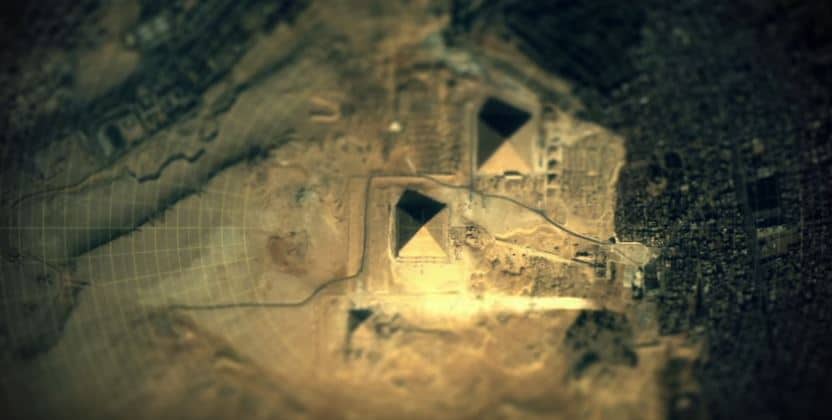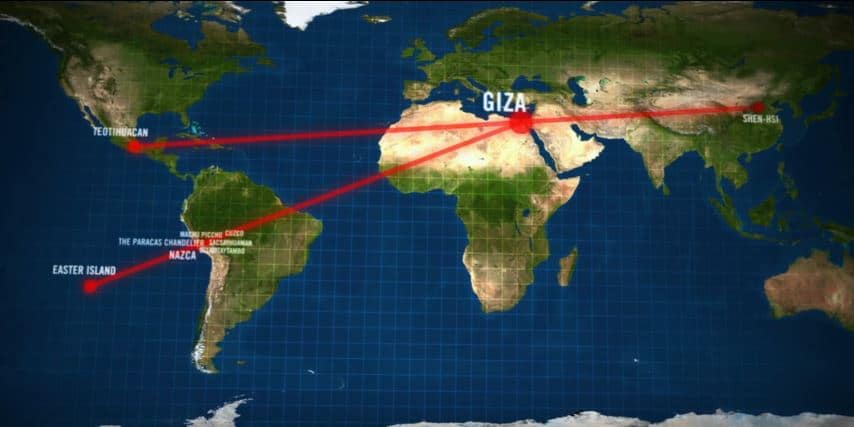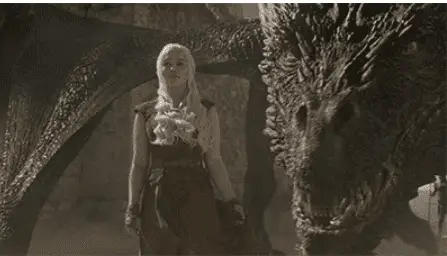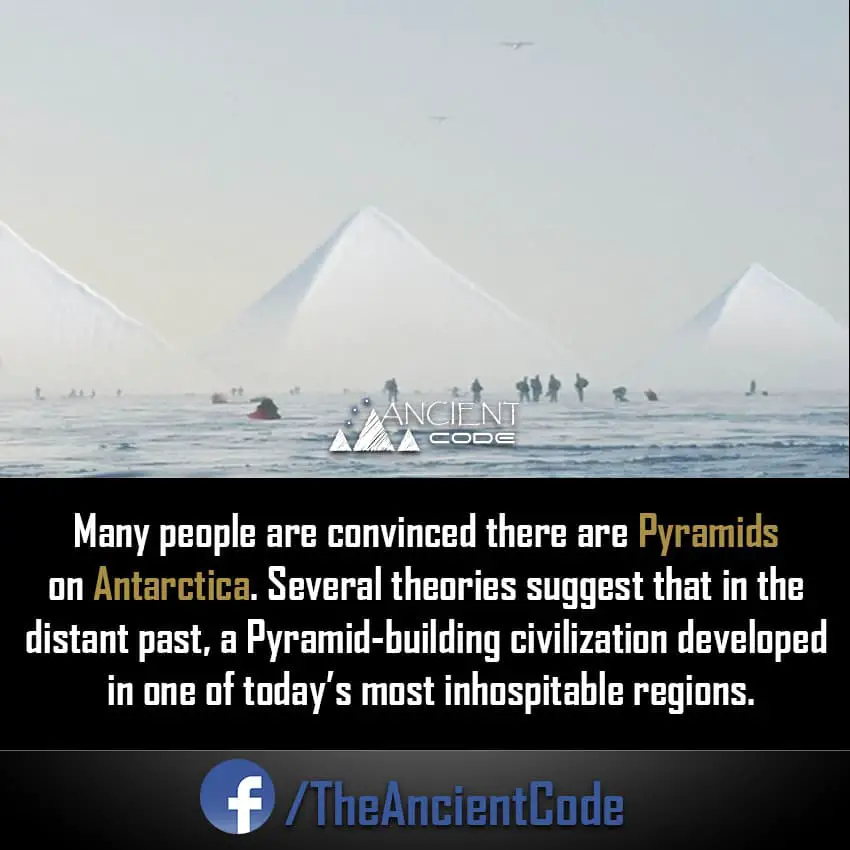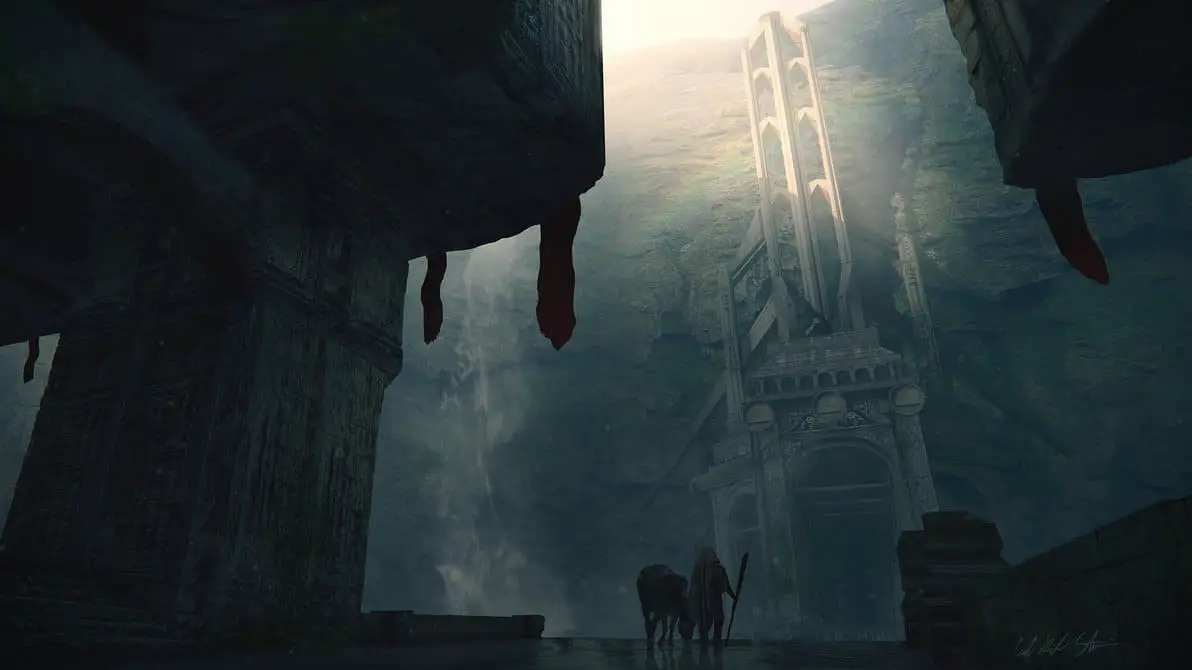
There is an extremely interesting document referred to as Manuscript 512, located in the Brazilian National Library in Rio de Janeiro. It mentions how a group of explorers stumbled upon a ruined ancient city in the eastern parts of Brazil in 1753.
This ‘magnificent stone city’ was unlike any other city they’ve ever seen, with architecture early reminiscent of that of Ancient Greece and mysterious writings not native to the region.
Located in the section of manuscripts at the National Library of Rio de Janeiro in Brazil we find an ancient document dating back to the eighteenth century titled “The manuscript 512,” which tells an incredible story of a lost city in the Amazon, with Ptolemaic writing and architecture similar to that of ancient Greece.
This ancient document speaks of the discovery of an ancient city of stone houses and magnificent wide streets, but not just any stone houses and wide streets: Mediterranean style houses and streets.
The ancient texts describe among many other details how an unknown expedition discovered an ancient city unlike any other in the region, with markings of Ptolemaic Greek, and architecture early reminiscent of that of Ancient Greece or Rome.

According to Manuscript 512, which is written as if it were a letter, an expedition of Portuguese Bandeirantes went into the sertón (a vast region of northeastern Brazil) in search of the mines of Muribeca, a Brazilian version of El Dorado.
Muribeca is the nickname of a descendant of a shipwrecked man taken by the Indians called Diogo Álvares.
The fact is that looking for that Brazilian version of El Dorado, the expeditionaries came across an ancient city devoured by the jungle which left them ecstatic: large buildings, paved roads, arches, reliefs, statues … Allegedly, they even spotted a canoe with two men of white complexion and dressed in the European who fled after seeing them.
The houses in the city, all extremely well decorated, had been abandoned for a long time and had no objects of furniture inside. The description of the city has characteristics of different civilizations of ancient times, especially Greek and Roman, although it also contains details not identified or without association. Thus, the author notes that all the houses in the city, for their regularity and symmetry, seemed one, as if they were from one single owner.
The enigmatic text of the manuscript is completed with curious details, such as documenting the discovery of a bag of gold coins bearing the silhouette of an archer and a crown, or the reproduction of hieroglyphs copied from various corners of the city, which some say bare an uncanny similarity with Greek and Phoenician letters.
Access to the original manuscript is extremely limited at present, although a digital version of this became available with the digital update of the National Library.
Here below is a translation of Manuscript 512, some parts of the text have been lost.
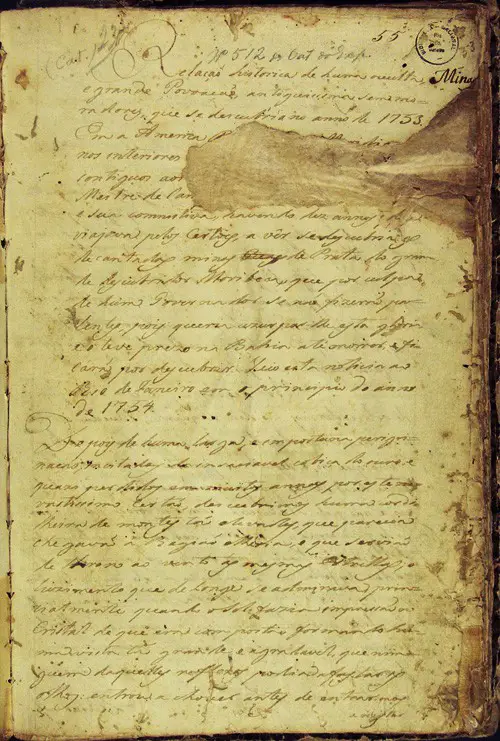
Historical Relation of a hidden and great city of ancient date, without inhabitants, that was discovered in the year 1753.
In America…………nos interiores (we inland)…….contiguous aos (next to the)….Mestre de Can (Master of Can)………………………..and his band (commitiva), having for ten years journeyed in the wilds (sertoes) to see if we could locate the famous silver mines of the Great Moribecca (who, by the wickedness (culpa) of a Governor, was not granted letters patent, because the Governor wanted to take the silver mines for himself and the glory thereof, and he, the Moribecca, was kept prisoner in Bahia, till he died, which was done to worm out of him the location of the silver mines. This account came to Rio de Janeiro, in the beginning of the year 1754…”
“After long and wearisome wanderings, incited by the insatiable lust for gold, and almost lost cordillera of mountains, so high that they drew near the ethereal region (chegavdo a regido etherea), and served as a throne of the winds, under the stars; their lustre, from afar, excited our wonder and admiration, principally when the sun shining on them turned to fires the crystals of which the rocks were composed. The view was so beautiful that none could take their eyes from the reflections. It began to rain before we came near enough to take note of these crystalline marvels, and we saw above…The spectacle was bare and sterile rocks, the waters precipitated themselves from the heights, foaming white, like snow, struck and turned to fire by the rays of the sun, like thunder-bolts. Delighted by the pleasing vistas of that….blended….shone and glistered….of the waters and the tranquility….of the day or weather (do tempo), we determined to investigate these prodigious marvels of nature, spread out before us, at the foot of the mountains, without hindrance of forests or rivers that would make it difficult for us to cross them. But when we walked round the foot of the cordillera we found no open way or pass into the recesses of these Alps and Pyrenees of Brazil. So there resulted for us, from this disappointment, an inexplicable sadness.
“We grew weary and intended to retrace our steps, the next day, when it came to pass that one of our negroes, gathering dried sticks, saw a white deer (hum veado branco), and, by that accident, as it fled away, he discovered a road between two sierras, that appeared to have been made by man and not the work of Nature. We were made joyful by this discovery and we started to ascend the road, but found a great boulder that had fallen and broken all to pieces at a spot where, we judged, a paved way (calcada) had been violently upheaved in some far-off day. We spent a good three hours in the ascent of that ancient road, being fascinated by the crystals, at which we marvelled, as they blazed and scintillated in many flashing colours from the rocks. On the summit of the pass through the mountain, we came to a halt.
“Thence, spread out before our eyes, we saw in the open plain (campo raso) greater spectacles (demonstracoes) for our vision of admiration and wonder. At the distance of about a league, as we judged, we saw a great city (povoacao grande), and we estimated, by the extent and sight of it, that it must be some city of the court of Brazil; we at once descended the road towards the valley, but with great caution…..would be, in like case, ordered to explore……by quality and……………if so well as they had noticed……..smokes (fumines (?)), that being one of the evident signs or vestiges of the place (povoacao).
“Two days we waited, wondering whether to send out scouts, for the end we longed for, and all alone, we waited till daybreak, in great doubt and confused perplexity of mind, trying to guess if the city had any people in it. But it became clear to us thee were no inhabitants. An Indian of our bandeirantes determined, after two days of hesitation, to risk his life in scouting by way of precaution; but he returned, amazing us by affirming he had met no one; nor could discover foot-steps or traces of any person whatever. This so confounded us that we could not believe we saw dwellings or buildings, and so, all the scouts (os exploradores) in a body, followed in the steps of the Indian…….”
“They now saw for themselves that it was true the great city was uninhabited. We, all, therefore, now decided to enter the place, our arms ready for instant use, at daybreak. At our entry we met none to bar our way, and we encountered no other road except the one which led to the dead city. This, we entered under three arches (arcos) of great height, the middle arch being the greatest, and the two of the sides being but small; under the great and principal arch we made out letters, which we could not copy, owing to their great height above the ground.
“Behind, was a street as wide as the three arches, with, here and there, houses of very large size, whose facades of sculptured stone, already blackened with age; alone……..inscriptions, all open to the day (todos aberias)…..decreases of…….observing, by the regularity and symmetry with their terraces open to the day, without one tile; for the houses had, some of them, burnt floors; others large flagstones.
“We went, with fear and trembling, into some of the houses, and in none did we find vestiges of furniture, or moveable objects by which, or whose use, we might guess at the sort of people who had dwelt therein. The houses were all dark, in the interior, and hardly could the light of day penetrate, even at its dimmest, and, as the vaults gave back the echoes of our speech, the sound of our voices terrified us. We went on into the strange city and we came on a road (street: rua) of great length, and a well set-out plaza (uma praca regular), besides, in it, and in the middle of the plaza a column of black stone of extraordinary grandeur, on whose summit was a statue of a man (homen ordinario: not a god, or demi-god) with a hand on the left hip and right arm out-stretched, pointing with the index finger to the north pole; and each corner of the said plaza is an obelisk like those among the Romans, but now badly damaged, and cleft as by thunderbolts.
“On the right side of the plaza is a superb building, as it were the principal town-house of some great lord of the land; there is a great hall (saldo) at the entrance, but still being awed and afraid, not all of us entered in the hou…….being so many and the retre……ed to form some………ed we encounter a…..mass of extraordin……..it was difficult for him to lift it…………….
“The bats were so numerous that they fluttered in swarms round the faces of our people, and made so much noise that it was astonishing. Above the principal portico of the street is a figure in half-relief, cut out of the same stone, and naked from the waist upward, crowned with laurel, representing a person of youthful years, without beard, with a girdle (banda) around him, and an under-garment (um fraldelim) open in front at the waist, underneath the shield (escudo) of this figure are certain characters, now badly defaced by time, but we made out the following:

“On the left side of the plaza is another totally ruined building, and the vestiges remaining well show that it was a temple, because of the still standing side of its magnificent facade, and certain naves of stone, standing entire. It covers much ground, and in the ruined halls are seen works of beauty, with other statues of portraits inlaid in the stone, with crosses of various shapes, curves (arches (?) corvos) and many other figures that would take too long to describe here.
“Beyond this building a great part of the city lies completely in ruins, and buried under great masses of earth, and frightful crevasses in the ground, and in all this expanse of utter desolation there is seen no grass, herb, tree, or plant produced by nature, but only mountainous heaps of stone, some raw (that is, unworked), others worked and carved, whereby we understood……..they……because again among……of……corpses that……….and part of this unhappy………..and overthrown, perhaps, by some earthquake.
“Opposite this plaza, there runs very swiftly a most deep (caudaloso) and wide river, with spacious banks, that were very pleasing to the eye: it was eleven to twelve fathoms in width, without reckoning the windings, clear and bared at its banks of groves, as of trees and of the trunks that are often brought down in floods. We sounded its depths and found the deepest parts to be fifteen or sixteen fathoms. The country beyond consists wholly of very green and flourishing fields, and so blooming with a variety of flowers that it seemed as if Nature, more attentive to these parts, had laid herself out to create the most beautiful gardens of Flora: we gazed, too, in admiration and astonishment at certain lakes covered with wild rice plants from which we profited, and also at the innumerable flocks of geese that bred in these fertile plains (campos); but it would have been difficult to sound their depths with the hand, in the absence of a sounding-rod.
“Three days we journeyed down the river, and we stumbled on a cataract (uma catadupa) of such roaring noise and commotion of foaming waters, that we supposed the mouths of the much talked of Nile could not have made more trouble or booming, or offered more resistance to our further progress. Afterwards, the river spreads out so much from this cascade that it appears to be a great Ocean (qui parece a grande Oceano). It is all full of peninsulas, covered with green grass, with groves of trees, here and there, that make………pleas………………Here, we find…………………….for want of it, we………………………….the variety of game……………many created beings without hunters to hunt and chase them.
“On the eastern side of this cataract, we found various subterranean hollows (subcavoes) and frightful holes, and made trial of their depths with many ropes; but, after many attempts we were never able to plumb their depths. We found, besides, certain broken stones, and (lying) on the surface of the ground, thrown down, with bars of silver (crevadas de prata) that may have been extracted from the mines, abandoned at the time.
“Among these caverns (furnas) we saw some covered with a great flagstone, with the following figures cut into it, that suggest a great mystery. They are as follows:

“Over the portico of the temple, we saw, besides, the following forms:

“Distant a cannon-shot from the abandoned city is a building like a country house (casa de campo), with a frontage of 250 feet. It is approached by a great portico, from which a stairway built with a door communicating with the said great chamber. Each room has its waterspout (or fountain: bica de agua)………………….the which water meets………………in the exterior courtyard…………..colonnades in the sur…………squared and fashioned by hand, overhung with the characters following:

“Thence, leaving that marvel, we went down to the banks of the river to see whether we could find gold, and without difficulty, we saw, on the surface of the soil, a fine trail promising great riches, as well of gold, as of silver: we marveled that this place had been abandoned by those who had formerly inhabited it; for, with all our careful investigations and great diligence we had met no person, in this wilderness, who might tell us of this deplorable marvel of an abandoned city, whose ruins, statues and grandeur, attested its former populous ness, wealth, and its flourishing in the centuries past; whereas, today, it is inhabited by swallows, bats, rats and foxes, that, fed on the innumerable swarms of hens and geese, have become bigger than a pointer dog. The rats have the tails so short that they leap like fleas and do not run or walk, as they do in other places.
“At this place, the band separated, and one company, joined by others, journeyed forward, and, after nine days long marchings, saw, at a distance, on the bank of a great bay (enseada) into which the river spreads, a canoe with some white persons, with long, flowing, black hair, dressed like Europeans…………….a gunshot fired as a signal to………………..for they had escaped. They had………………………shaggy and wild………………….their hair is plaited and they wear clothes.
“One of our company, named Joao Antonio, found in the ruins of a house a piece of gold money, of spherical shape, greater than our Brazilian coin of 6,400 reis: on one side was an image, or figure of a kneeling youth; on the other, a bow, a crown, and an arrow (setta), of which coins we doubted not to have found many in the abandoned city; since it was overthrown by an earthquake, which gave no time, so sudden was its onset, to take away precious objects; but it needs a very powerful arm to turn over the rubbish, accumulated in so many long years, as we saw.
“This news is sent to you Honour from the interior of the province of Bahia and from the rivers Para-oacu and Una, and assuring you that we shall give information to no person, whatsoever; for we judge the villages are empty of people and boat owners. But I have given to your Honour the mine we have discovered, reminded of the great deal that is owed to you.
“Supposing that from our band, one of our company went forth, at this time, with a different pretense…..he may, with great harm to your Honour, abandon his poverty and and come to use these great things for his own benefit, taking great care to bribe that Indian (therefore), so as to spoil his purpose and lead your Honour to these great treasures, etc………………………….would find, in the entrances……….flagsones…………..”

These strange characters were engraved on the great stones, sealing the vault of treasure, that the baneiristas could not open. This completes the fascinating manuscript by the bandeiristas of Minas Geracs that inspired many explorers to search for the lost city. Colonel P. H. Fawcett found that fourteen out of the twenty-four characters inscribed on the pillars and porticoes recorded in the South American manuscript were identical with those he accidentally discovered in the jungle forest of Ceylon. When he got back to civilization he took a copy of the inscriptions to a learned Sinhalese priest, who told him that the writing was a form of Asoka, of the old Asoka Buddhists, in a cypher which only those ancient priests understood. Experts surmise that the bizarre inscriptions record the cacheing, in a time of great dearth, or famine, of an immense treasure that would be thousands of years old.
However, despite the fact that this ‘lost city’ is documented in an official manuscript housed in the Brazilian National Library in Rio de Janeiro, no one has ever found traces of this Mediterranean-type city, despite the fact that several expeditions set out in search of this ancient city, and any treasures it may contain.
Even though the Manuscript describes the lost ‘city’ in great detail, it doesn’t include a specific location regrettably.
Many argue that the intricately described ancient city is nothing more than an 18th-century work of fiction.
One of the most famous explorers to have set out in search of the lost city was Colonel Percy Harrison Fawcett, who, together with his son Jack Fawcett and Raleigh Rimmell entered the Amazon jungle in search of a lost city.
Fawcett, who was already extremely interested in the rumors spread by local Indians about lost cities located in uncharted parts of the Amazon, after reading the Manuscript 512, convinced him that the stories were true.
Fawcett did not beli3eve that it was the natives who erected this lost city, but a lost European civilization, or the Phoenicians perhaps, who after arriving in Brazil eventually intermarried with Indians. Fawcett claimed to have seen on numerous occasions, white-skinned Indians, as he traveled across the jungle.
Featured image credit: Wallpapers

